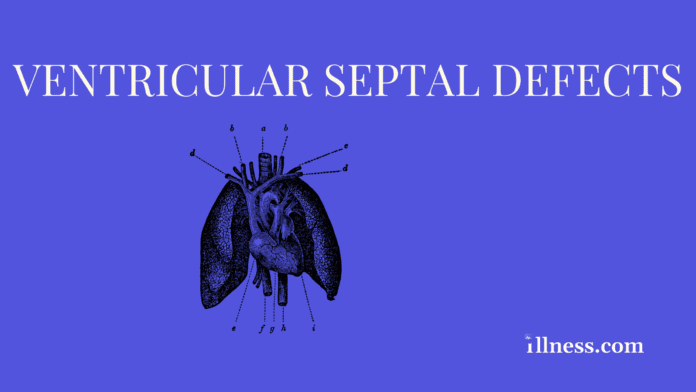Overview Of Ventricular Septal Defect
A Ventricular Septal Defect is when there is an open chamber between the wall that divides the left and right ventricles, in the heart. This is one of the most common heart conditions present at birth (congenital). Almost half of the entire child population with congenital heart disease have a ventricular septal defect. This can arise by itself or with other heart conditions.
Commonly Associated With
Congenital heart defect – VSD; Interventricular septal defect
Causes Of Ventricular Septal Defect
Before a baby is born, the right and left ventricles of the heart are not separate. As the fetus grows, a septal wall forms to separate these 2 ventricles. If the wall does not completely form, a hole remains. This hole is also known as a ventricular septal defect or a VSD. The hole can occur in different locations along the septal wall. There can be a single hole or multiple holes.
A baby may not have any symptoms of VSD and the open space between the ventricles can close, as a newborn grows. However, a too large hole can lead to a large amount of blood on the lungs. This contributes to heart failure . A small hole may stay undiscovered until a person is an adult.
VSD’s origin is unknown. This congenital issue mostly arises alongside other heart defects at birth.
VSDs can be a rare, but possibly severe, in an adult. This can then be a complication of heart attacks.
Symptoms Of Ventricular Septal Defect
It is possible for people with VSDs to not show symptoms. However, if a hole is too big, a baby could show symptoms tied to heart failure.
The most common symptoms include:
- A Fast heart rate
- Hard breathing
- Frequent respiratory infections
- Shortness of breath
- Sweating while feeding
- Hard breathing
- Paleness
- Failure to gain weight
Exams & Tests
Listening with a stethoscope can identify a heart disruption. Also, how loud it is can relate to how large a hole could be and how much blood is filling the hole.
Tests may include:
- MRI or CT scan of the heart — used to see the defect and find out how much blood is getting to the lungs
- ECG — shows signs of an enlarged left ventricle
- Echocardiogram — used to make a definite diagnosis
- Chest x-ray — looks to see if there is a large heart with fluid in the lungs
- Inserting a cardiac catheter. This is most done for high blood pressure concerns in the lungs
Treatment Of Ventricular Septal Defect
A baby with a small hole might not need treatment. But they should still be examined by a provider for signs of heart failure and to make sure the hole closes.
Medicine can manage substantial VSD symptoms. As well, diuretic medicine can alleviate some symptoms, like congestive heart failure.
Surgery is possibly needed, even if medicine is used to limit symptoms. Certain types of VSD symptoms can be fixed when inserting a cardiac catheter, and this can alleviate a necessity for surgery. This solution is named transcatheter closer.
Have a discussion with a specialist or surgeon before undergoing a surgery, if VSD symptoms do not show heart damage.



